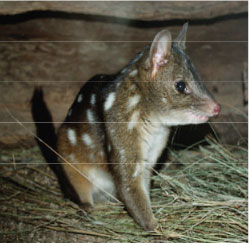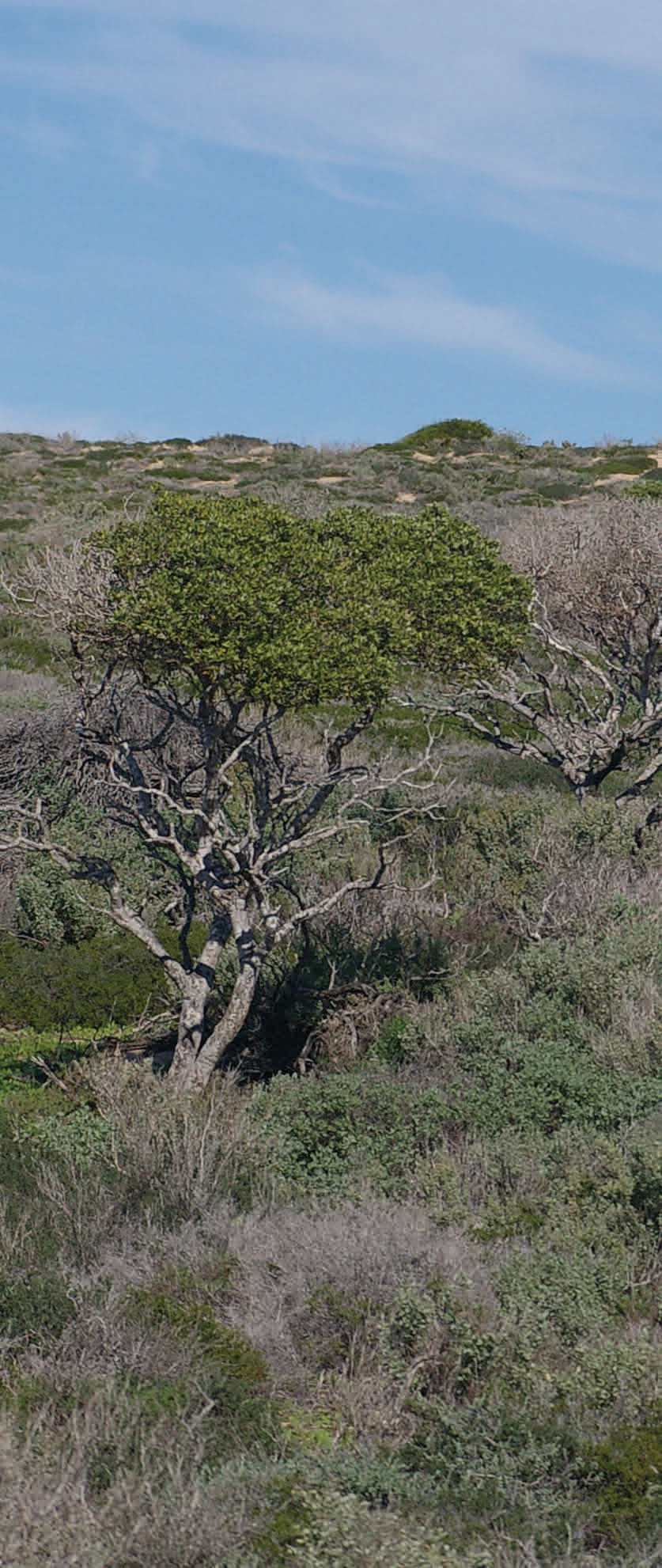Chuditch (Western Quoll)
Chuditch (Western Quoll)
Dasyurus geoffroii
Description

| Head-body 260 – 400mm |
Tail 210 – 350mm |
Weight 0.6-2kg |
The distinctive markings and size of the chuditch make it easy to identify. Between 40 and 70 white spots on this marsupial’s brown body fur break up its outline, making the chuditch hard for both predators and prey to see.
Its granulated footpads readily distinguishes it from its more arboreal relative, the Northern Quoll (Dasyurus hallucatus), which has striated footpads.
Diet and habitat

About the size of a domestic cat, the chuditch is Western Australia’s largest carnivorous marsupial. It hunts large invertebrates and small vertebrates on the ground at night.
This solitary animal has a large home range and is an excellent climber. It sleeps in hollow logs or burrows during the day.
Breeding

| Gestation 17 – 18 days |
No. young 2 – 6 |
Weaned 4 – 5 months |
Young are born between May and September and are independent at about six months of age. They become sexually mature in their first year and live up to four years.
Distribution

Occurring naturally only in patches in the south west corner of Western Australia, attempts have been made to reintroduce the chuditch to mainland sites, including sanctuaries. The chuditch is proposed for reintroduction to Dirk Hartog Island as part of the Return to 1616 project.
Status

Loss of habitat and feral predators (foxes and feral cats) are major threats to the chuditch.
Fact sheet
SHARK BAY
World Heritage



